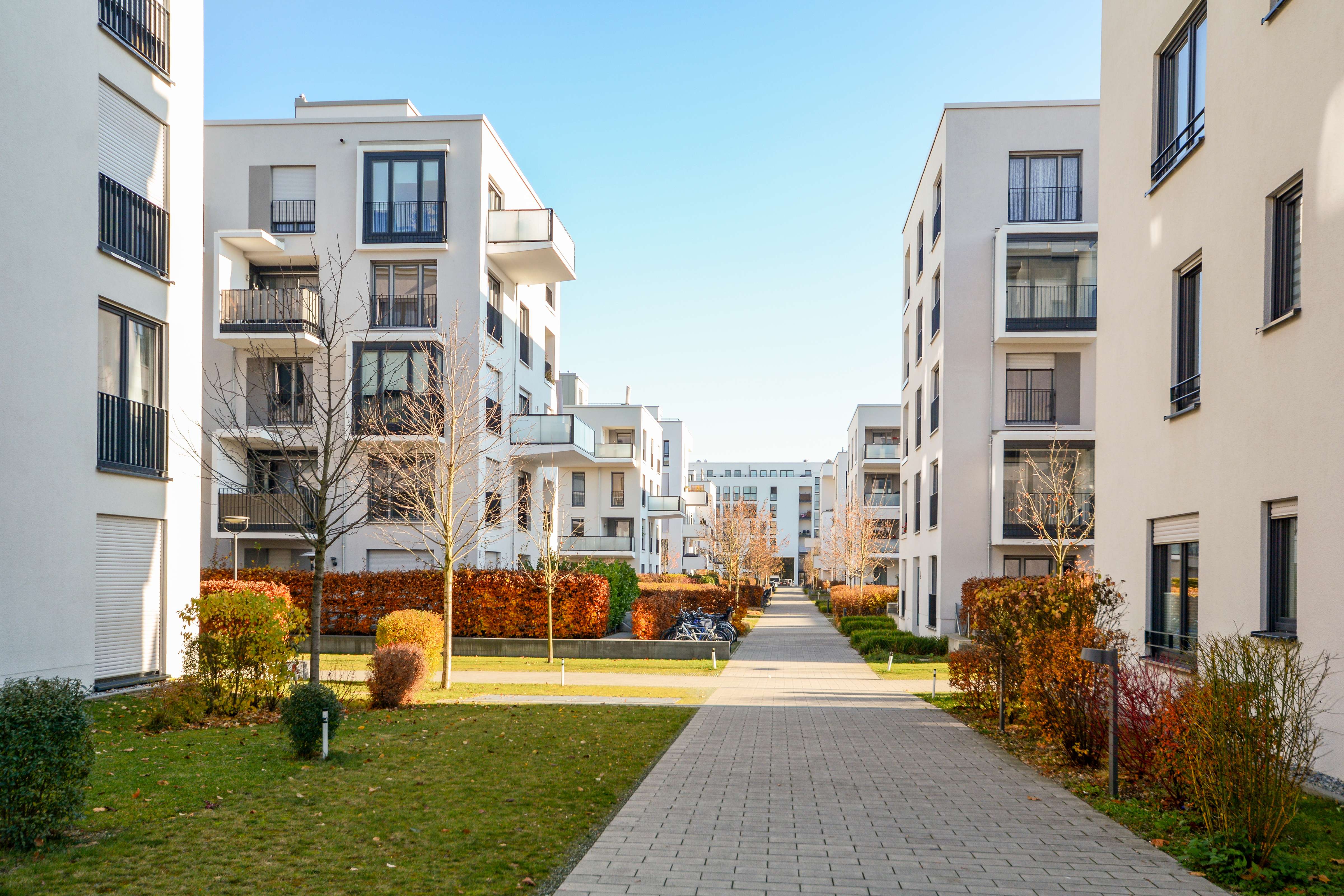How does a condo work?

Definition Condominium Ownership
Condominium ownership is a special form of co-ownership that offers various advantages. It meets an individual desire for home ownership, but is also a solution to the shrinking building space in Switzerland. Condominiums are co-ownerships in which several people own a certain part of a dwelling. A particular construction in which each owner has an exclusive right that applies to his dwelling, but possibly also to another room, for example a community room. This exclusive right makes it possible to arrange the interior of the dwelling, to sell the property or to mortgage it. In order to benefit from an exclusive right, the property in question must form an entity and have its own access.
Thus, in a condo, we distinguish:
- the private parts on which the co-owner has an exclusive right of use (the interior of his apartment, the internal non-load-bearing walls, the front door of the apartment, the interior part of the balcony, etc.) ;
- the common areas of which the members of the condominium are co-owners (the plot, the load-bearing walls, the roof, the facade cladding, the elevator, etc.).
Shared costs and risks between all co-owners is just one advantage of condominium ownership.
The best known form of this kind of ownership is the "horizontal form," which is the division of an apartment building into floors or even smaller units. The case of several apartment buildings built as terraced houses is rather rare in practice.
The key points of the constitution of a condo
The memorandum of association allows the entry into force and validity of the tiered property. The latter is a declaration containing the authentic legal form and the entry in the land register. A simple informal agreement is not sufficient to constitute a condominium.
Article 712 section 2 of the Swiss Civil Code (CC) governs the deed of incorporation and can be concluded on the basis of a written contract signed by the co-owners or on the basis of a declaration by the individual owner.
Each floor property within the building has its own sheet and number in the land register. Thus, its autonomy and exclusive rights are guaranteed.
In the majority of cases, the constitution of a floor property is carried out by a single person who owns all the rights to the object and sells them later.
The legal basis for the tiered property can be found mainly in the Civil Code (CC) in articles 712 a-t. However, as co-ownership is also a reference for this form of dwelling, detailed provisions are also indicated by articles 646-651 CC as well as, sometimes in a complementary way, by the law of associations (articles 60-79 CC).
The share and its calculation
The share reflects the share of value of a unit in the total value of the building. It also sets out the extent of the owner's rights and duties per floor within the community.
The share is very important because it is the figure on which common expenses such as maintenance costs are distributed.
It is usually expressed in hundredths or thousandths of the total value. The share plays no role in setting the selling price of an object, which depends rather on supply and demand as well as the situation and standard of construction.
In order to determine the share correctly, it is recommended to consult an expert. The reference points for the definition of the shares are generally:
- The base area (in square meters) of the shares subject to exclusive rights.The base area (in square meters) of the premises subject to exclusive rights.
- The base area of the shares subject to rights of use: e.g. a parking space.
Once the share has been calculated, it is entered in the land register. A change is only possible in two cases:
- All owners approve the change by a vote and the land register is adjusted accordingly.
- An owner requests a correction of his share due to an error (calculation error, major transformation of the building).
Administration and management
In most cases, an administrator is appointed when a co-ownership is created. Basically, he or she is elected by the assembly of co-owners.
His main mission is to represent the interests of all the co-owners. His role will also be to manage the various requests, organize meetings, monitor the inventory of fixtures, manage any work that may be required and ensure that the owners fulfill their duties (maintenance of common areas, etc.). The administrator must also manage the keeping of the accounts of the condo and ensure the budget follow-up approved by the general assembly.
The administrator's fees are generally fixed in advance and vary according to the type of condo and the tasks assigned to it..
The renovation fund
The purpose of setting up a renovation fund is to pay for any major maintenance work required over time. In the case of recent PPEs, the fund is not always set up in the first few years since the construction is recent and still under warranty.
It is up to the owners to decide how much money should be allocated to the fund. The usual rule is that the contributions are made as a percentage of the value of the property, for example: 2.5 per thousand CHF 3 million.
As a general rule, only the administrator and/or two persons from the condo committee may dispose of the renovation fund account.
In conclusion, the condo is an excellent way to become an owner. Our Cardis Sotheby's International Realty agents are at your disposal for more information.